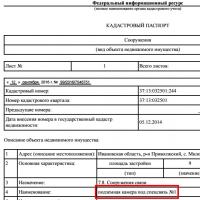Presentation on influenza virus. What is flu? Influenza is an acute respiratory infection caused by the influenza virus. How to get sick with the flu
Flu epidemics happen every year
usually during the cold season and
affect up to 15% of the world's population
ball. Influenza and ARVI make up 95%
all infectious diseases in
the world. Every year in the world, up to
500 million people, 2 million from
who die.
In Russia, they annually register from
27.3 to 41.2 million people with influenza and
other acute respiratory viral infections (WHO data).
infection
respiratory tract caused
influenza virus.
Included in the group of acute respiratory
viral infections (ARVI).
Periodically distributed in the form
epidemics and pandemics. The name of the disease comes from
the Russian word "wheeze" - sounds,
published by the sick. During
Seven Years' War (1756-1763) is
the name spread to
European languages, already denoting
the disease itself, not a single symptom.
Then there was a secondary
borrowing into Russian from
French "grippe". The first mentions of the flu were
marked many centuries ago - back in 412
year BC description of flu-like
the disease was made by Hippocrates.
Also flu-like outbreaks were
noted in 1173. The first
a documented influenza pandemic,
claimed many lives, happened in 1580
year. They talk about an epidemic when
get the flu at the same time
a large number of people in one
country. Duration of the influenza epidemic
usually 3-6 weeks. IN
in the event of a pandemic, influenza affects
simultaneously a large number
people in different countries. In this case
the disease is caused by new
influenza virus serotypes to which
the overwhelming majority
population. Therefore the virus
spreads with very high
speed and causes disease in
a very severe form. The transmission of infection is carried out by airborne droplets. Virus from the respiratory mucosa
pathways when breathing, sneezing, coughing, talking
is released in great concentration and can
suspended several
minutes. There is also the possibility of transmission
infections through household items, nipples, toys,
linen, dishes.
Scatter
aerosol particles
when sneezing
Flu symptoms
In the case of a typical development of the infection,the following flu symptoms:
- a sharp rise in body temperature (during
several hours) to high numbers (38-40 ° С)
(reaches its maximum on the first or second day
diseases)
- chills
- dizziness
- muscle pain
- weakness
- headache The "contagious" period reaches its maximum
1-2 days after the onset of the disease. After 5-7 days of illness, the concentration of the virus in the exhaled
air drops sharply, and the patient becomes
practically harmless to others
(Pokrovsky V.I., "Epidemiology and infectious
disease ").
Localization of symptoms
flu In 1918-1920. infamous
"Spanish flu" (H1N1 flu virus) carried away
by the most conservative estimates, more
than 20 million lives.
In 1957 - 1958 from a pandemic under
the name "Asian flu" (virus
influenza H2N2) killed in the USA alone
more than 70 thousand people. In 1968-1969. happened average
severity of "Hong Kong flu" (virus
influenza H3N2), which killed
more than 34 thousand people over 65
years of age.
The emerging pandemic of "bird flu"
according to various sources claimed
lives of about 40 million people.
Most of the deceased are healthy
young people aged 25 to 45,
which is extremely disturbing
sign. In April this year, all news agencies flew
news of an epidemic of a new deadly H1N1 species.
The virus infecting pigs is similar to the human, and
its mutation can happen quickly enough.
Moreover, pigs are often infected with different
influenza viruses, after which they become
a kind of "laboratories" for crossing
strains unlike each other.
Prevention of influenza
1) Vaccination2) Wash your hands more often, especially before
food
3) Wear a mask
4) Do not touch your face with your hands
5) Rinse your nose
6) Cleaning of premises
7) Limit the maximum space,
where are many people
8) Healthy lifestyle
- sufficient and varied
food
- emotional comfort
- general strengthening of the body
(sports, gymnastics,
hardening)
Flu treatment
1. Bed rest.2. Daily ventilation, damp cleaning if possible
premises.
3. Sufficient water regime. Give as much drink as possible
liquid, 2-3 liters per day is required.
4. Reduce the temperature. Temperatures above 38.5 ° C are reduced by
mandatory, these are no longer useful, but harmful to the body
numbers. Reduce with paracetamol or ibuprofen (ibufen).
IN NO EVENT WITH ASPIRIN !!! Aspirin increases permeability
vascular wall and can lead, when used, to
complications of the flu, the same pulmonary edema. Particularly dangerous use
aspirin to lower fever in children - may lead to
severe complications, such as Raynaud's syndrome.
5. Nutrition. Light food (porridge, broth)
6. Expectorant drugs.
To use the preview of presentations, create yourself a Google account (account) and log into it: https://accounts.google.com
Slide captions:
A little history of the disease There is no controversy regarding the first mention of the disease. This event dates back to 412 BC. It was then that Hippocrates described a case of the disease, which was distinguished by a high degree of contagion and manifested itself with fever, pain in muscles and bones, and general catarrhal symptoms (cough, runny nose, sore throat). The following references to major influenza outbreaks date back to the Middle Ages. Since the 12th century, more than a hundred epidemics have been described, which are popularly called the "Italian fever". But the real disaster was cases of diseases of a mass nature - the so-called pandemics, which take place from 1580 to the end of the 8th century, approximately once every 20-30 years. At that time, there was still no information about the causative agent of the disease. The cause of the disease was seen in the special arrangement of the planets, the action of food consumed in winter, the influence of the planet's electromagnetic field, fluctuations in humidity and air temperature, of course, the action of heavenly punishment as a punishment for human sin.
Flu virus: who is it? What is the flu virus? Microorganism? Probably not. It is difficult to call it an organism. This is a creature on the verge of "living-dead". In fact, a virus is a chain of genetic information (RNA or DNA) packed in a dense capsule. It cannot reproduce, grow, and somehow change in an ordinary environment. With the help of special proteins on the surface of the capsule (capsid), the influenza virus can "stick" to the cells of the respiratory mucosa, and then, having penetrated into the cell, the microorganism "comes to life" - it is embedded in the DNA and begins to actively multiply. And from that moment on, millions of viruses during coughing, talking, sneezing enter the respiratory tract of healthy individuals. And it is extremely difficult to protect yourself from this. In one of the experiments, it was proved that in a regular subway car, a virus that entered the environment during a sneeze is capable of moving at speeds up to 128 km / h.
"Spanish Flu" - the largest epidemic of the 19th century One of the most terrible pandemics is the "Spanish flu" that occurred at the end of World War I. Within 18 months (1918-1919), more than 20% of the world's population was infected, of which about 80 ml of people died. Some sources report that the epidemic was named “Spanish flu” precisely because Spain was the focus of infection. But this is not the case. China is considered the birthplace of the "Spanish" flu. And then what is Spain here? It's pretty commonplace. This country did not participate in hostilities, so strict censorship of Spanish print media did not apply. It was in the newspapers of this country that the first mentions of the massive spread of the disease appeared, and actual information about the infected and the dead was reported. And it was believed that Spain was the focus of the disease.
Temperature pills help spread the flu throughout the body. After all, normal or slightly elevated body temperature is heaven for the virus. With a satisfactory state of health, it is recommended to take antipyretics for adults only at temperatures above 39 ° C, for children - 38.5 ° C.
Having received a salary in paper money or withdrawing a fee from a plastic card, you can easily get sick with the flu. Scientists have found that banknotes are an excellent breeding ground for infection. The flu persists on them for more than 2 weeks. Therefore, in some countries money is printed on paper with antiseptic properties, while in Japan money is washed at 200 degrees in a special washing machine.
The flu virus can be frozen without being harmed. At temperatures around zero, the virus persists for up to a month. That is why the most peak incidence occurs during the thaw. But ordinary soap kills the flu virus on the spot, drying and temperatures above 70 o C. also work.
Where does the flu live? It is known for certain that influenza viruses are constantly moving: in spring and summer they are in the south, and in winter they move to the north. This circulation occurs constantly. The possible birthplace of influenza is called the equator, where outbreaks of the disease are recorded regardless of the season. There is also an assumption that in the intervals between annual outbreaks, the virus "rests" in the body of birds or animals.
History Influenza is translated from French as "to grasp". At the beginning of the century, this dangerous malaise was called "Spanish", and even earlier - "Russian disease". The first causative agent of influenza was discovered in 1933 and was later named virus A. In 1940, scientists discovered another influenza virus, B. In 1949, a third virus, C, was discovered, causing local manifestations of mild influenza. After the worldwide epidemic of "Asian influenza A" in 1957, two more varieties were identified, which received the A1 and A2 labels. More than 2,000 variants of the influenza virus have now been identified.


Risk group children (especially young age); elderly people (over 60 years old); patients with chronic severe heart diseases (heart defects, coronary heart disease, severe arterial hypertension) and lungs (bronchial asthma, chronic bronchitis, pulmonary emphysema).


Catarrhal syndrome is the result of damage to the mucous membranes and manifests itself as follows: Dryness, perspiration, sore throat. It occurs when the mucous membrane of the pharynx is affected. Cough. It occurs when the virus enters the bronchial mucosa and at the beginning of the disease is dry, towards the end it can become wet, and when a bacterial infection is attached with the separation of yellow (purulent) sputum. Nasal congestion, sneezing. It occurs due to damage to the nasal mucosa. With the development of the disease, light discharge appears. Voice change. It is a manifestation of an infectious inflammation of the larynx mucosa. The effect of the virus on the mucous membrane of the eye is manifested by redness of the conjunctiva, lacrimation, and sometimes photophobia.

Intoxication syndrome usually appears later than catarrhal and disappears before it, but nevertheless is more severe. The multiplication of viruses inside cells is accompanied by the formation of toxins dangerous to humans. The destruction of infected cells leads to the ingress of these substances into the bloodstream, which cause a picture of intoxication syndrome. It manifests itself: fever, chills, pain in joints and muscles in more severe cases, nausea, vomiting and loss of consciousness.

Hemorrhagic syndrome occurs only in 5-10% of cases. Against the background of a hyperemic, with a cyanotic shade, granular mucous membrane of the oropharynx, punctate hemorrhages are possible. In some cases, nosebleeds are noted. Severe manifestations of this syndrome are possible with the development of acute hemorrhagic pulmonary edema.






Take vitamins. Eat more fresh vegetables and fruits, complex vitamins. In addition to medications prescribed by your doctor, you can use delicious non-drug remedies, such as rosehip tea, tea with raspberries and honey, and linden tea. Sugar raspberry juice is a good refreshing drink at high temperatures.


For prophylaxis during flu epidemics, you can take 2-3 cloves of garlic daily. It is enough to chew a clove of garlic for a few minutes to completely cleanse the oral cavity of bacteria. The use of onions also has a positive effect.

Temper yourself. Hardening is a special workout that helps you stay healthy. Children should walk as much as possible: it is almost impossible to get the flu in the fresh air. Warm foot baths with mustard (5-10 minutes) are very helpful, after which the feet are rubbed with some kind of warming ointment.

Vaccination against influenza Vaccination is the main means of prevention of influenza. The optimal time for vaccination against influenza is from September to December, and the time for antibody production takes about 24 weeks and the high titer of antibodies caused by vaccination lasts for several months, starting to fall 6 months after vaccination. When vaccinating adults and adolescents, the vaccine is injected into the deltoid muscle of the shoulder. For young children, the vaccine is given in the anterolateral upper thigh. When vaccinating adults and adolescents, the vaccine is injected into the deltoid muscle of the shoulder. For young children, the vaccine is given in the anterolateral upper thigh.


Slide 1
 Slide 2
Slide 2
 Slide 3
Slide 3
 Slide 4
Slide 4
 Slide 5
Slide 5
 Slide 6
Slide 6
 Slide 7
Slide 7
 Slide 8
Slide 8
The presentation on the topic "Influenza Prevention and Treatment" can be downloaded absolutely free of charge on our website. Project subject: Biology. Colorful slides and illustrations will help you engage your classmates or audience. To view the content, use the player, or if you want to download the report - click on the corresponding text under the player. The presentation contains 8 slide (s).
Presentation slides

Slide 1

Slide 2

Slide 3
The latter applies to a greater extent to certain groups of people: children (especially of an early age); elderly people (over 60 years old); patients with chronic severe heart disease (heart defects, coronary heart disease, severe arterial hypertension) and lungs (bronchial asthma, chronic bronchitis, pulmonary emphysema). Therefore, it is these categories of people who should first of all use the means of preventing influenza and be especially closely monitored by doctors in case of influenza.

Slide 4
Flu symptoms: the main symptom is a high temperature (up to 41.5 degrees), which lasts for several days (up to 5); against the background of the temperature, there is a headache (mainly in the front part - forehead, eyes, temples), aches throughout the body, primarily in the legs; a little later a dry cough joins (a sign of tracheitis). Runny nose, sore throat are not typical. Also, with the flu, there is no diarrhea, if it does appear, then it is either another infection (for example, enterovirus), or a side effect of drugs. Nausea or vomiting can be, especially in young children, they are associated with intoxication.

Slide 5

Slide 6
The best way to fight the flu is to prevent it. It includes: influenza vaccinations (every year influenza vaccines are issued taking into account the expected virus strain) - a very high level of prevention reliability; Isolation of patients from those who are not sick, the use of personal protective equipment (gauze masks on the face) are effective, but ideally (in fact, it is difficult to strictly adhere to this regime). The use of prophylactic drugs does not provide a reliable guarantee against disease.

Slide 7
Treatment for influenza includes antiviral drugs (described above), symptomatic treatment (pain relievers, antipyretic drugs), drinking plenty of fluids (as at elevated temperatures, a lot of fluid is lost when breathing and sweating) and a regimen. It is very important to observe bed rest during the entire period of elevated temperature, since it is the failure to comply with this condition that often turns out to be fraught with complications.




